Au Charbon!
CID at Grand Hornu, Belgium
25.09.2022 - 08.01.2023



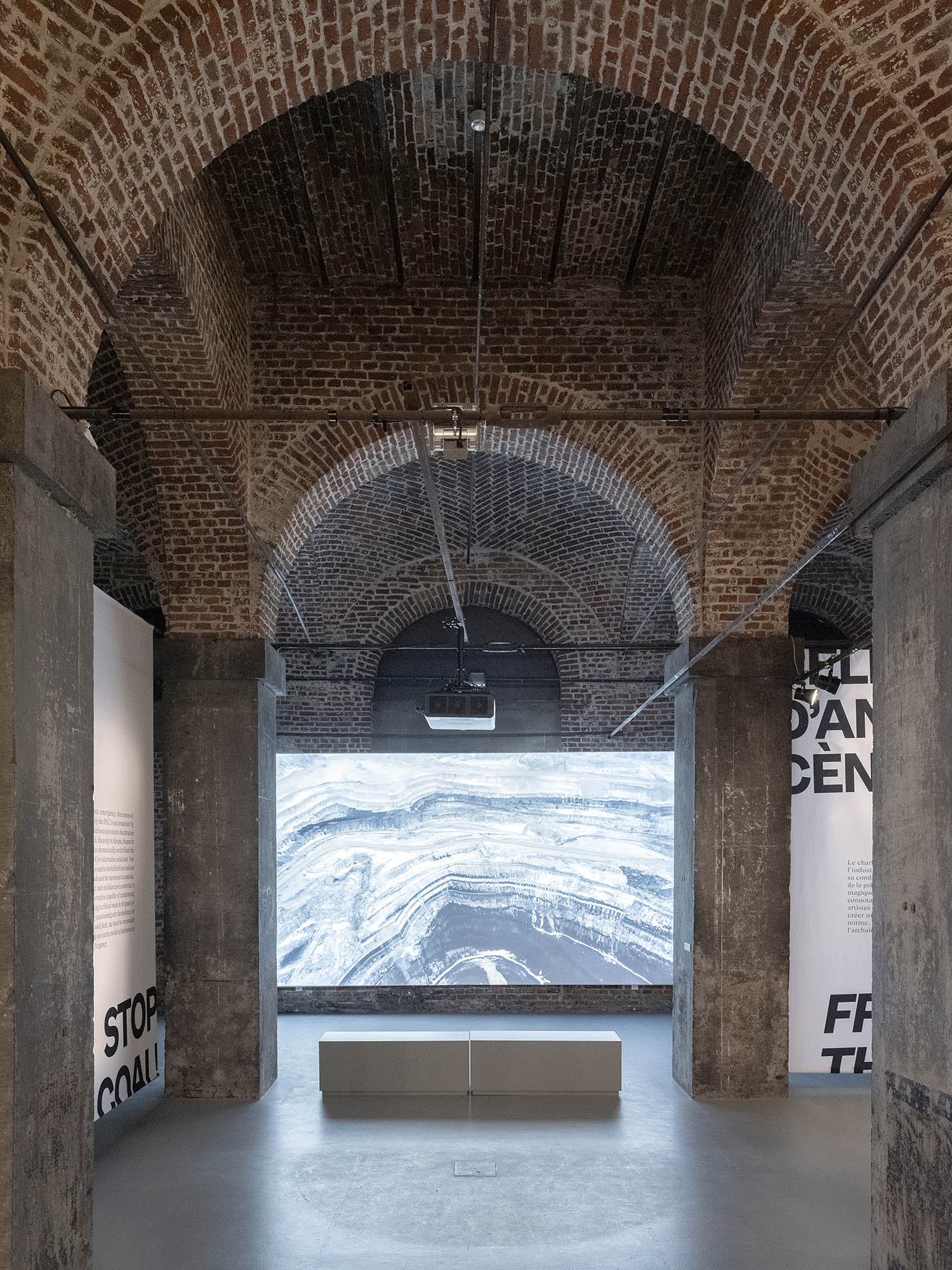



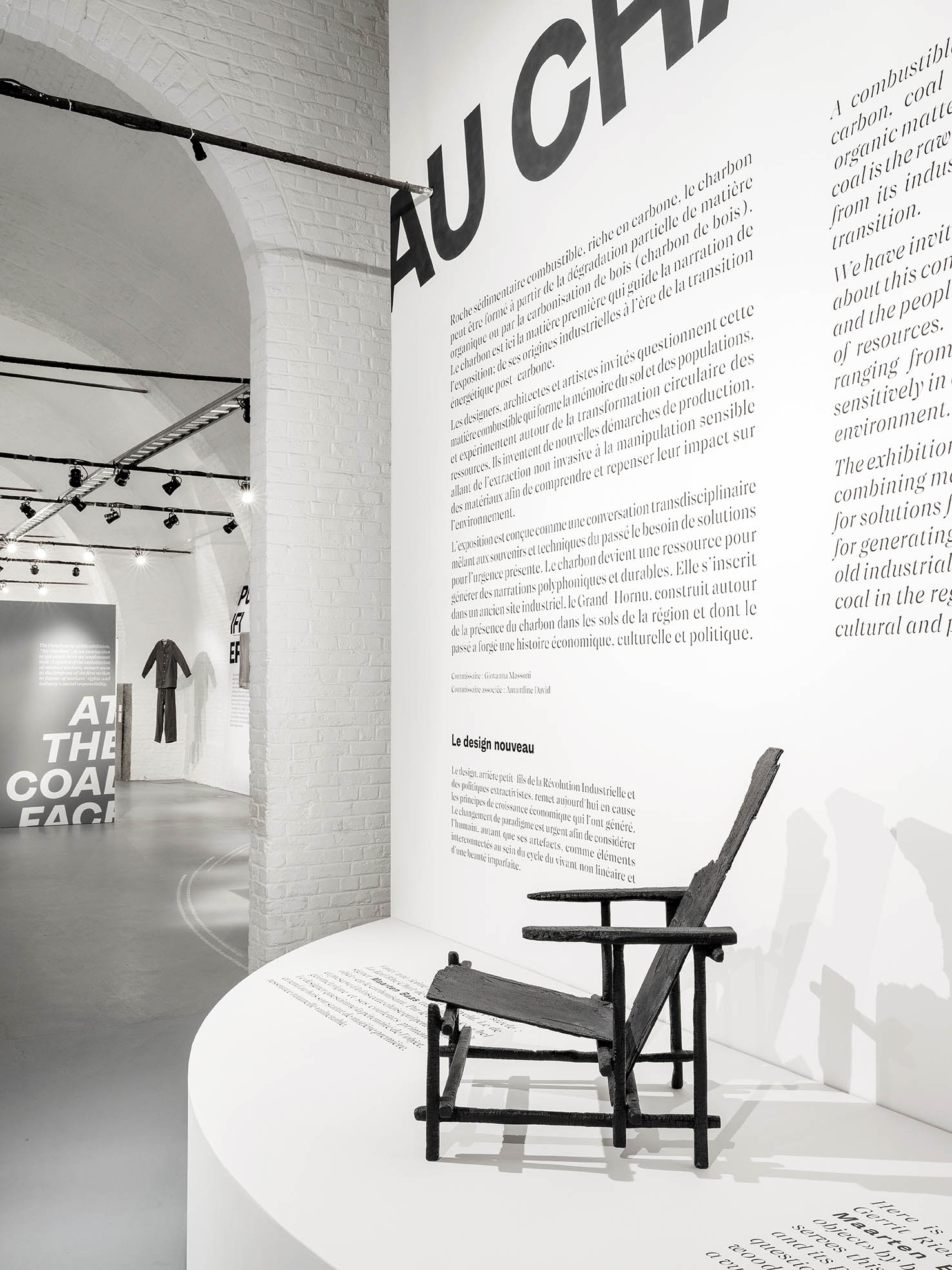


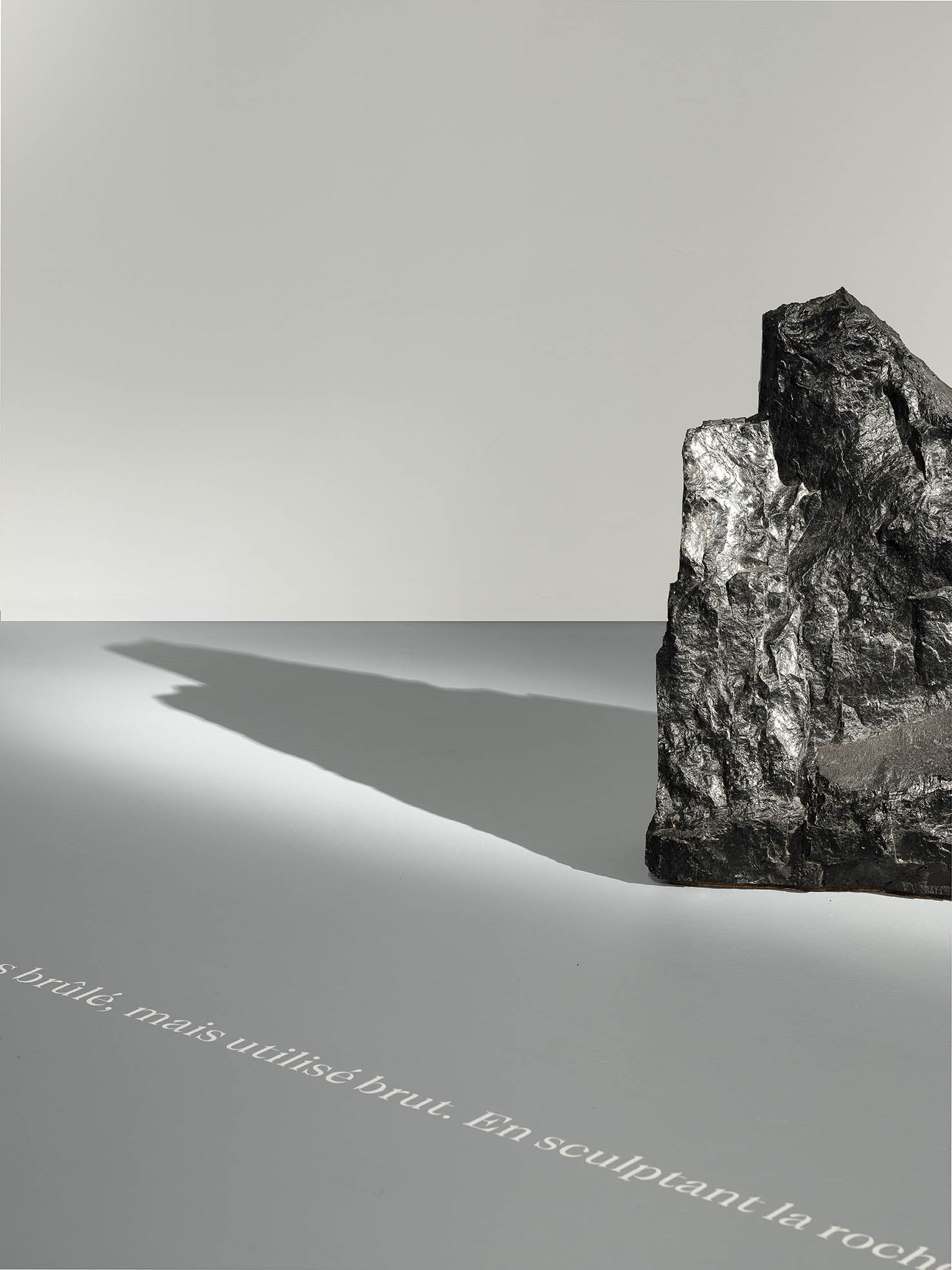
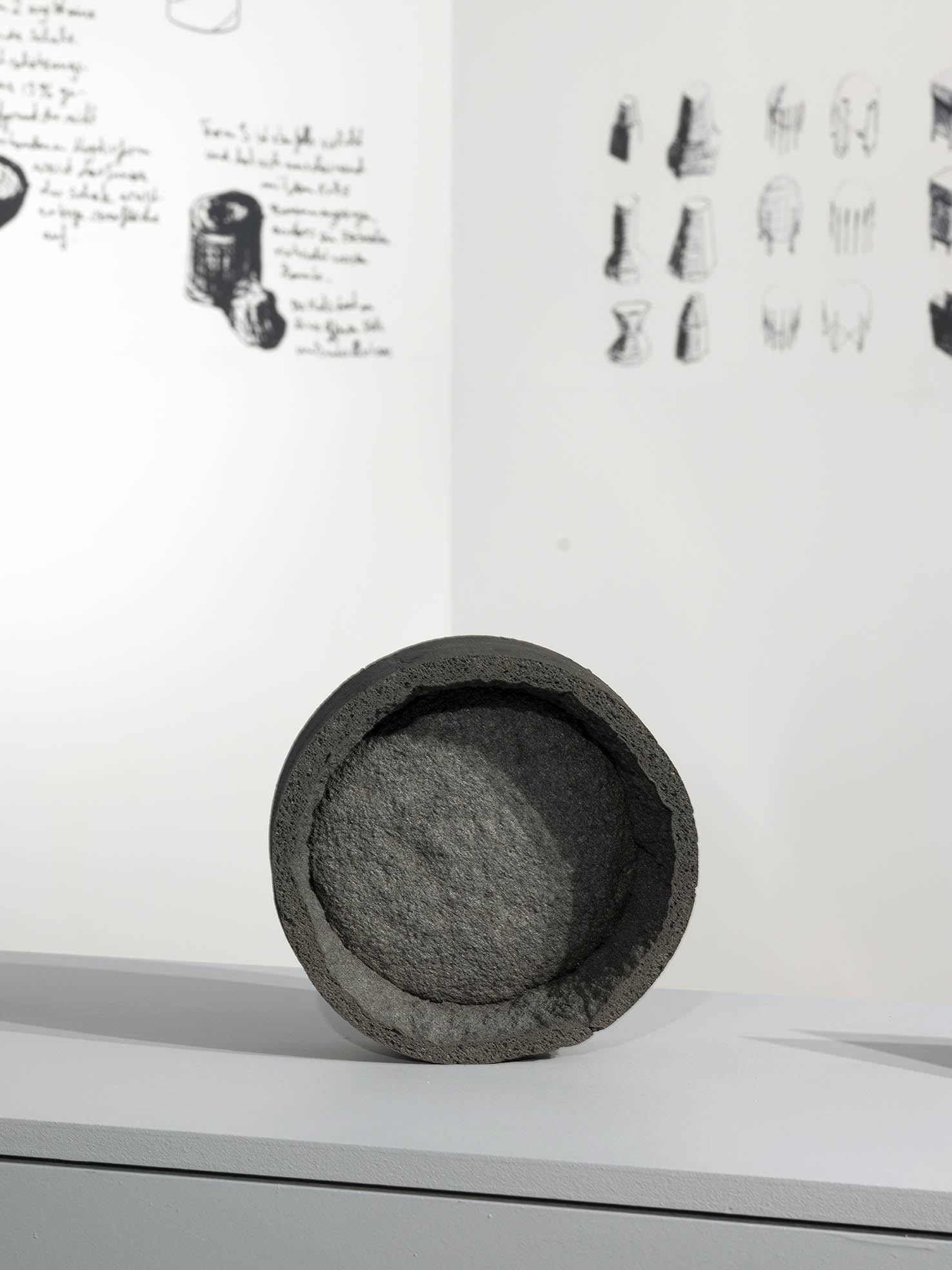
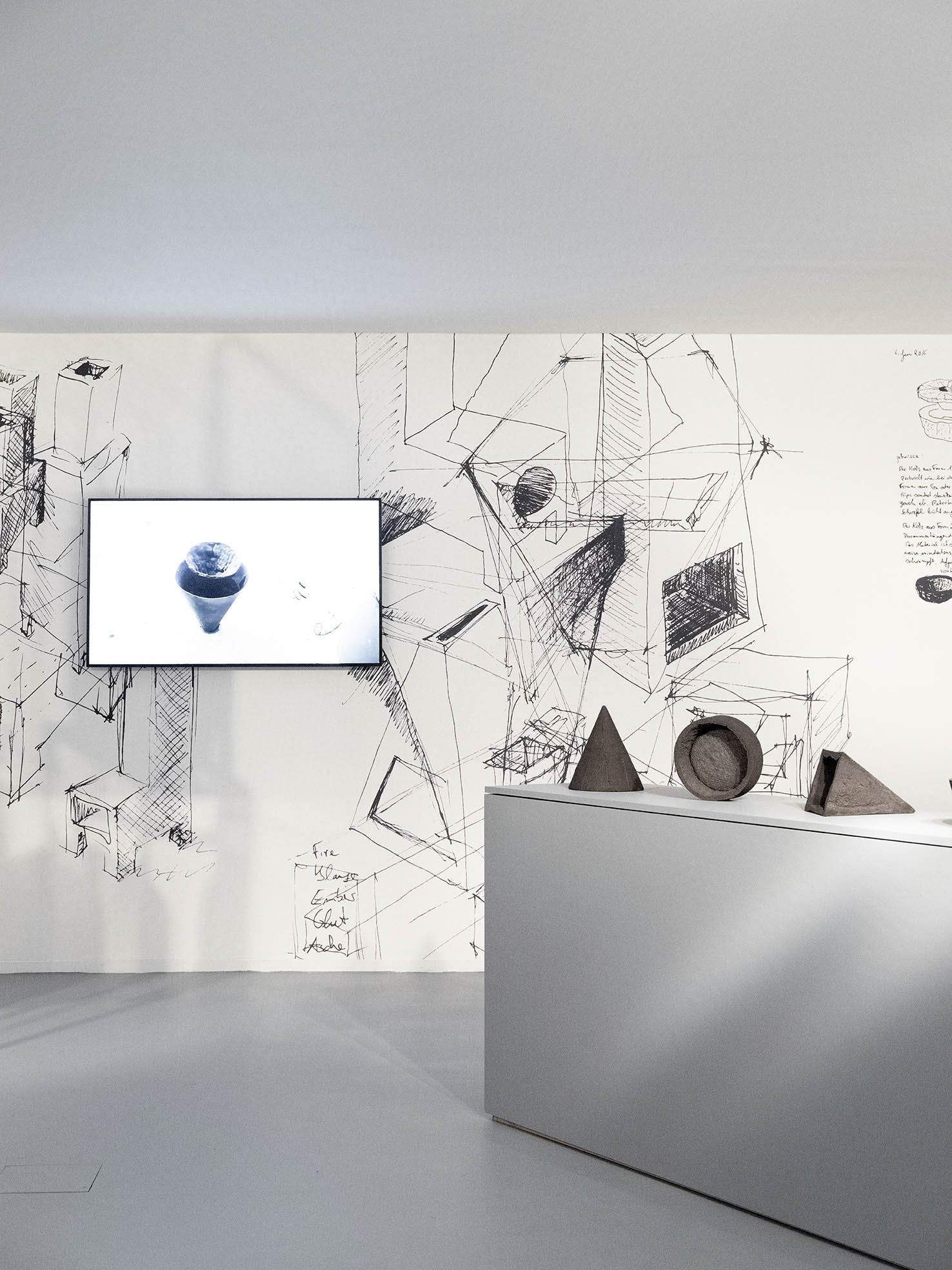
Au Charbon!
CID at Grand Hornu, Belgium
25.09.2022 - 08.01.2023
For the exhibition Au Charbon! the studio was inspired by the activist nature of large lettering used in citizen movements against the exploitation of fossil fuels, as a result the exhibition is designed in which objects, texts and images form a sensitive and militant landscape.
Applied to the walls and on the floor, the text immerses the spectator in a narrative exhibition that places the story and the projects on the same level of reading.
The treatment of the text plays with a typography that refers to the narrative, interwoven with titles reminiscent of those of ecological demonstrations.
The stencil is applied directly to the building and the bases covered with printed wallpaper are made from wooden panels recovered from previous exhibitions.
The stencil on the floor creates the curatorial path, marking a natural boundary between the public and the fragile objects, encouraging the viewer to look down to the ground, the source of coal mining.
Through this mixture of techniques and the removal of plastic elements from the exhibition, the scenography explores different ways of reducing the environmental impact on an exhibition, in order to be more in tune with the post-carbon era.